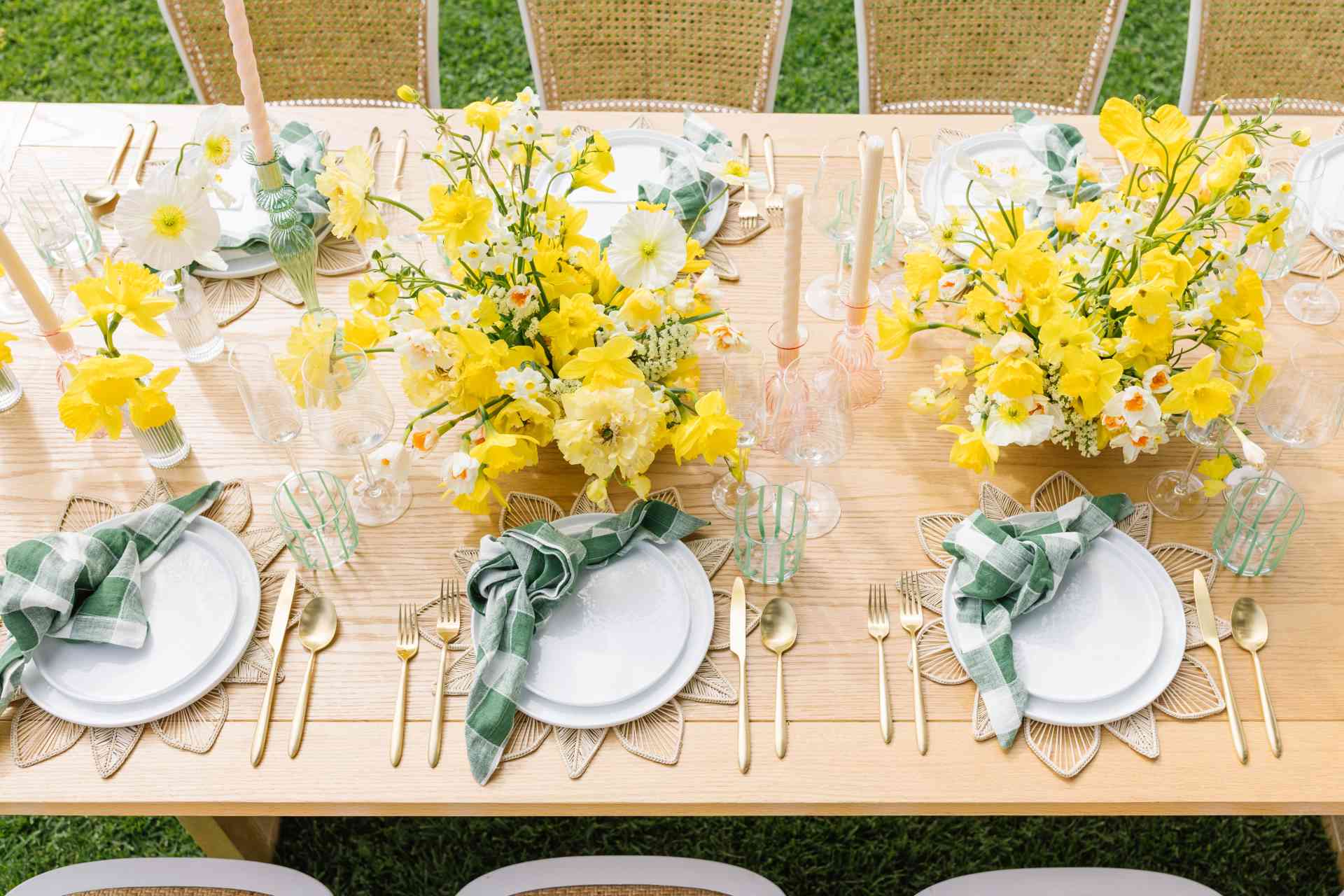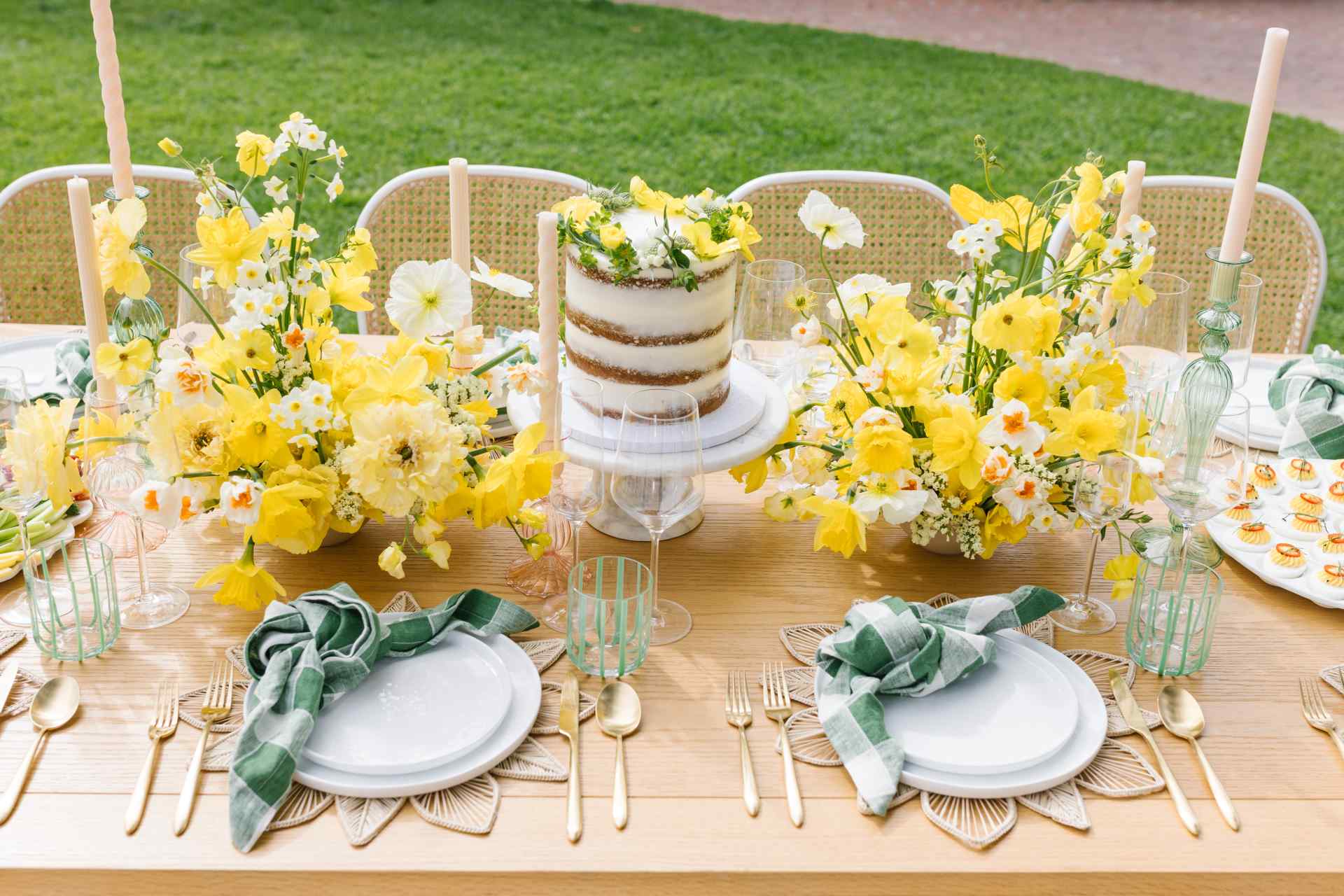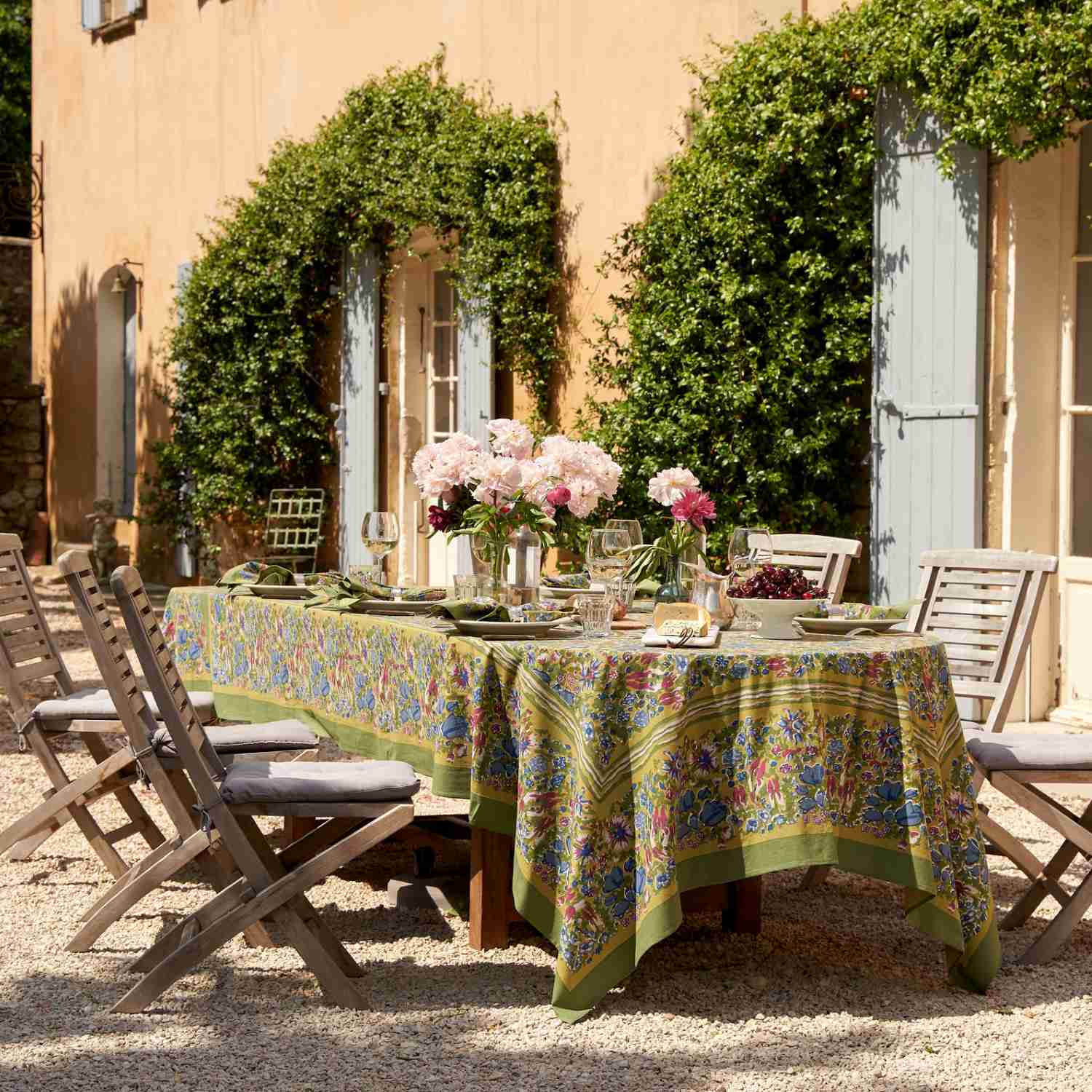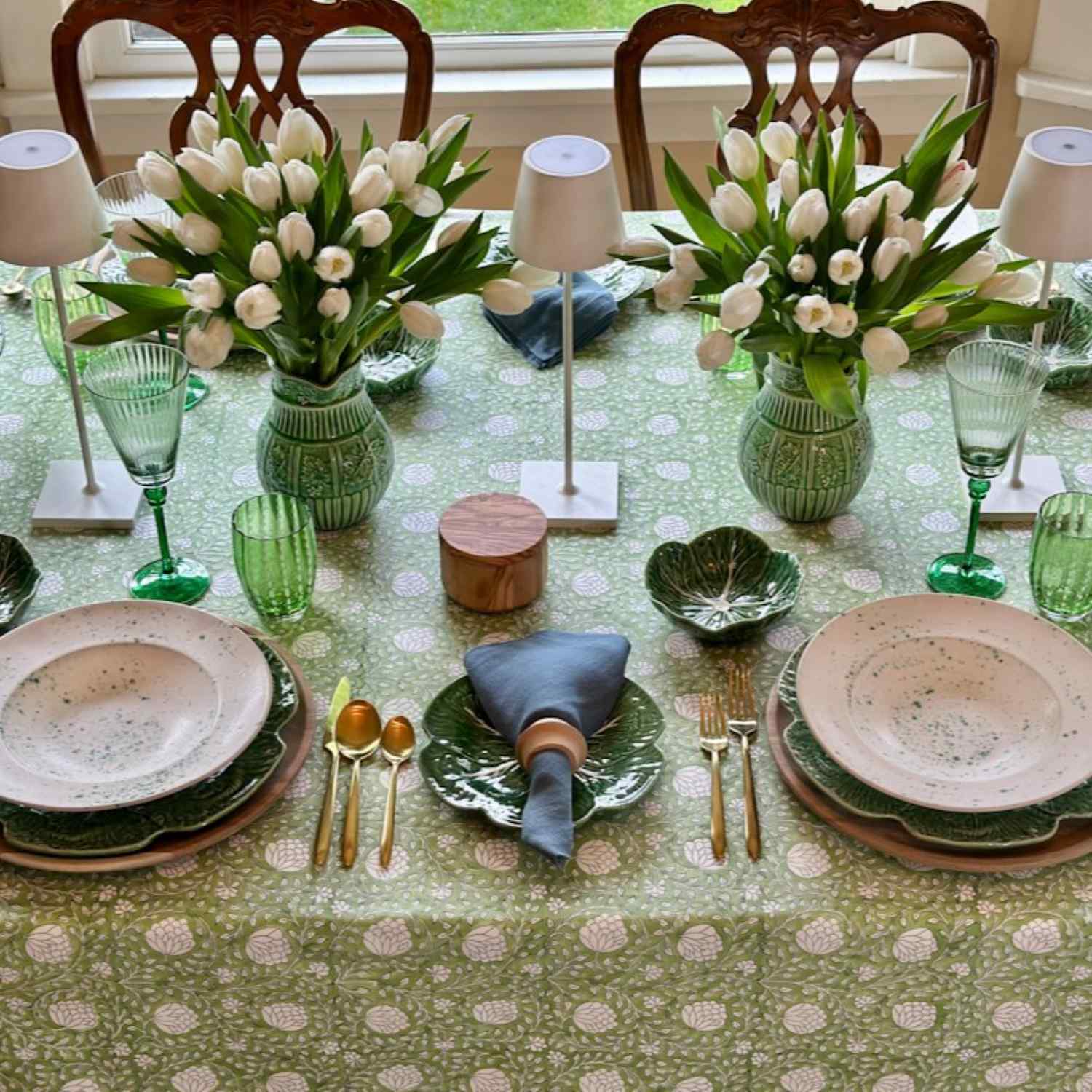Become the Hostess With The Mostest


Your linens are the foundation of your table. They set the mood, add texture and depth and can be as timeless or trendy as you like.
Crisp table linens instantly elevate a setting, while a playful mix of placemats and runners brings a modern, layered look. Even the smallest details—like how you fold a napkin, or the napkin rings you choose—help create a thoughtful, well-styled table.
The beauty of table linens is in their versatility. You can go for classic white napkins with delicate embroidery for a traditional touch or lean into bold colors and patterns to reflect your personality. Whether you love the elegance of a formal tablescape or prefer the effortless charm of a more relaxed setting, knowing how to use linens effectively makes all the difference.
But with so many options—napkins, tablecloths, placemats, runners—it’s easy to wonder what’s worth investing in and what’s just extra. Do you really need linen napkins for a casual dinner? Are placemats necessary if you’re using a tablecloth? And what’s the trick to making your table look put together without feeling fussy?
From Easter brunch to dinner parties and everyday meals, this guide will walk you through the essentials of kitchen and dining linens, including choosing the right materials, figuring out sizing and styling tips for your next gathering.
Hungry for more? From napkins and runners to tablecloths, kitchen towels and more, our linen collection has everything you need to give your home a much-needed refresh!

A tablecloth instantly polishes your table, whether you’re going for understated elegance or a statement-making centerpiece.
It’s the foundation of your tablescape, setting the tone for your meal. The key is choosing the right fabric, size and layering approach to complement your dining space and the occasion.
Not all tablecloths are created equal. The fabric you choose affects not just the look but also the feel of your table, how it drapes and how easy it is to maintain. Some materials lend themselves to everyday use, while others are reserved for more formal affairs.
Cotton: Versatile, breathable and easy to clean, cotton is ideal for everyday meals and casual gatherings. It comes in a variety of colors and patterns, making it a great way to bring personality to your table.
Linen: The epitome of effortless elegance, linen has a natural texture and drape that feels both refined and inviting. Though it wrinkles easily, those soft creases add to its character and gives your table an organic, lived-in feel that still looks intentionally styled.
Note: If you want the beauty of linen with fewer wrinkles, look for:
Polyester blends: If you love the idea of a fabric tablecloth but prefer something more practical, polyester blends are a great option. They’re stain-resistant, durable and easy to wash, making them perfect for large gatherings or homes with kids.
Vinyl: If you’re hosting a picnic, an outdoor dinner or a family meal where spills are inevitable, a vinyl tablecloth is your best friend. It’s water-resistant, easy to wipe clean and practical without sacrificing style—especially with modern patterns and textures available.
Choosing the right size tablecloth isn’t just about coverage; it’s also about proportion. The amount of fabric that drapes over the sides of your table (known as the “drop”) affects the overall aesthetic.
Here are a few recommendations for picking the right size tablecloth:
If you’re unsure about the right size, it’s always better to go slightly larger than too small—an overly short tablecloth can look awkward, while extra fabric can be artfully draped for a more inviting effect.
Combining different linens, textures and colors can add dimension and make your tablescape feel more curated and intentional. Consider these layering techniques:

Napkins may seem like a small detail, but they play a big role in elevating your table. More than just a functional piece of fabric, they add structure, personality and a finishing touch that pulls everything together.
Cloth napkins are for moments that feel special—dinner parties, holidays and even weeknight meals when you want to add a touch of refinement. They’re more sustainable than paper, and they can be styled in endless ways, whether elegantly folded, loosely draped or gathered in a napkin ring.
Paper napkins still have their place, especially for casual brunches, outdoor gatherings and large events where easy cleanup is key. But not all paper napkins are created equal—high-quality options with beautiful patterns or textures can still elevate a table without the commitment of cloth.
When it comes to cloth napkins, fabric choice makes all the difference in both function and style. Whether you’re setting a formal table or keeping things casual, here are some of the most popular materials to consider:
Most people default to standard dinner napkins, but different sizes serve different purposes:
Napkin rings are like jewelry for your table—they add just the right amount of polish and personality. They’re also one of the easiest ways to switch up your table styling without investing in new linens.
A neatly folded napkin on the plate feels classic and refined, while a more relaxed drape across a charger or placemat brings an effortless charm. Napkin rings make styling even easier—just slide the napkin through, fluff and you’re done.
If you want to experiment, try:

No matter the occasion, high-quality linens elevate any meal, bringing elegance, texture and a sense of intention to the table.
By selecting fabrics and styling that match the event, you ensure your gathering feels both beautiful and effortless—and without feeling over- or underdone.
Here are a few ideas and linen pairings for you next event:
For casual family dinners and everyday meals comfort and practicality are key.
A polyester-blend or cotton tablecloth in a neutral or muted tone adds a polished yet effortless feel, while woven or linen placemats can provide structure without the need for a full table covering.
Brunches and outdoor dining call for light, airy linens that feel fresh and inviting.
Whether you’re hosting a casual weekend gathering or an Easter brunch, a breathable linen or chambray tablecloth keeps the setting relaxed yet refined. A soft linen runner adds an extra layer of warmth without making the table feel overly styled, while rattan or woven placemats bring texture and depth.
For a seasonal touch, floral or soft-hued linen napkins tucked into napkin rings create a thoughtful yet laid-back aesthetic, perfect for spring or summer celebrations.
For holiday feasts and formal dinner parties, linens should reflect the sense of occasion.
A crisp white or richly colored linen tablecloth creates a refined base, while embroidered or textured placemats add dimension. Layering with a velvet or silk runner enhances the visual depth, and folded linen napkins styled with elegant napkin rings bring the final touch of polish.
Weddings and ultra-formal gatherings require luxurious, floor-length linens that create a seamless, sophisticated look.
Choose linen or silk tablecloths that drape elegantly and pair them with oversized linen napkins, even embroidered for a bespoke feel. A sheer linen or silk runner cascading down the table adds movement and drama, making the setting feel effortlessly grand.
Hungry for more? From napkins and runners to tablecloths, kitchen towels and more, our linen collection has everything you need to give your home a much-needed refresh!
Shop Our Spring Linen Collection
Join The Conversation